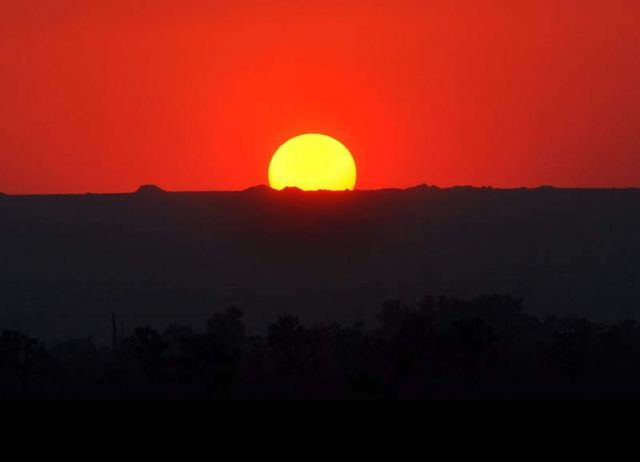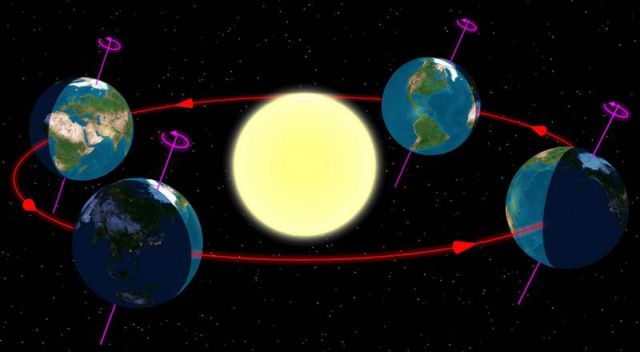Today’s Solstice coincides with an “extremely rare event ,”a strawberry full moon, for the first time since 1967.
The summer solstice, the time of the longest day, about 21 June in the northern hemisphere and 22 December in the southern hemisphere.
Above, Summer Solstice Sunset over the Mojave desert 19:01 06-20-2016. Credit /wikimedia
This year the Moon reaches full side, just 11 hours to the solstice. At 1967 was the last time that the two events happened very close together.
They were less than an hour apart on June 21, 1948.
Diagram of the Earth’s seasons as seen from the north. Far left: summer solstice for the Northern Hemisphere. Front right: summer solstice for the Southern Hemisphere. Credit wikimedia
The summer solstice occurs when the tilt of a planet’s semi-axis, in either northern or southern hemispheres, is most inclined toward the star that it orbits. Earth’s maximum axial tilt toward the Sun is 23° 26′. This happens twice each year (once in each hemisphere), at which times the Sun reaches its highest position in the sky as seen from the north or the south pole.







Leave A Comment